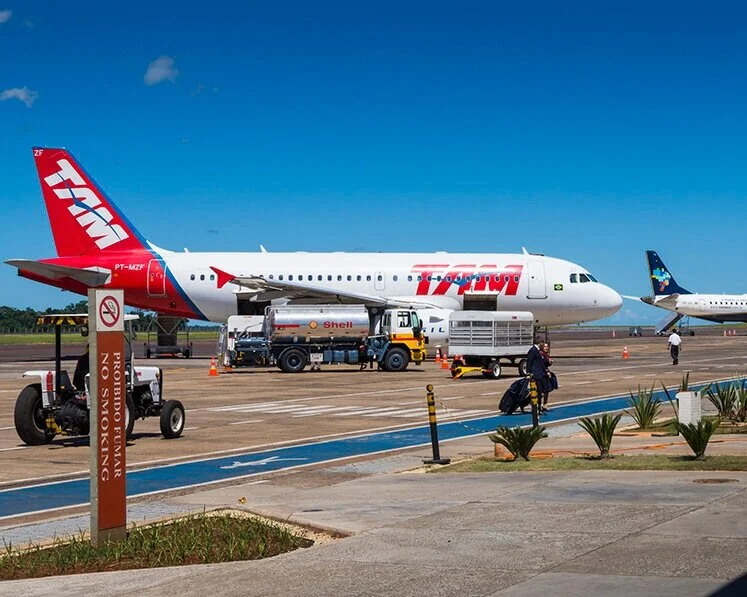The History of American Aid for Jordan
/JORDAN, Amman - The Hashemite Kingdom of Jordan, one of the Unite States' key ally in the troubled Middle East. It is also one of more than 200 other countries and territories across the globe that consistently receive annual U.S. aid to help face their political and economic hardships. However, despite all this financial support Jordan has received from the second half of the last century up to today, the country has incurred heavy debt of almost $24 billion or around 90 percent of its GDP.
Based on USAID’s data, this article sheds the light on the extent to which America financed the support Jordan for over the past 16 years, in effect bolstering the reign King Abdulla who ascended the throne in 1999 and continues to rule.
Money received
Jordan has received almost $13 billion during Abdulla's reign, which accounts for 46 percent of the total amount of aid given by America since 1951. When Abdulla inherited the throne of Father King Hussain, as the new ruler he took a more aggressive approach to broadening the country's relationship with the U.S. It appears that the relationship was quid pro quo, giving the appearance that America purchased the country to strengthen its presence in the Middle East. This in effect was how Jordan became a key alley to the U.S, during its invasion of Iraq in 2003, and established the foundation of a joint venture in the war against terrorism in the Middle East.
U.S giving aid to Jordan in 1951, resulting in the cumulative amount of aid given to the country at an astounding $28 billion. The data also shows that Jordan has received approximately $700 million per annum. In 2003, the year of the U.S invasion of Iraq, Jordan received its highest amount in aid which topped out at $1.5 billion.
Another notable fact was that during the intervening years of the civil war in Syria, the U.S. has exponentially increased both its presence in the region and aid to Jordan. Between 2012-2014, the country was given around 4 billion dollars, more than one billion each year in aid or roughly 14% of the total amount of aid the U.S. has given to the country since 1951.
During those three years, Jordan has also tried to absorb more than half a million refugees from neighboring Syria, while actively participating and supporting its allies in the war against ISIS.
In general, the data shows that the amount of aid has tripled over the examined period, increasing from almost $300 million in 1999 to more than $800 million in 2015.
Aid by category
Analyzing the data based on the category of the type of aid received, both economic or military, shows that economic aids was consistetly higher than that allocated to the military.
Aid by sector
Over the past 16 years, the lion share of the aid, around $3 billion or 26%, was channeled into Security System Management and Reform. Second on the list was General Budget Support, around $2 billion (18%) of the aids.Other sectors of the government have also been allocated aid during the examined period totaling five billion dollars. Second, came the category called “Other” which totaled around $3.5 billion. Of this number, the lowest awards were earmarked for education and economic growth and totaled around $300 million each. Despite the billions of dollars in aid to ostensibly improve governance, the country has failed to date to make any significant political reform.
Though initially seen as migrating toward a democracy, the government was actually more akin to a plutocracy. Now, King Abdullah rules as an autocratic monarch, a role which was codified by recent constitutional amendments which increased his powers to appoint and dismiss senior government employees. Most recently these included the president of the judiciary council, the president and the members of the constitutional court. Taken in tandem with his power to both handpick an appoint the prime minister, the chief of the staff and the president of the intelligence department, he has become the rule of law. A king who actually controls both the judiciary and executive branches of government giving him absolute power. This is in addition to his control of the army and security forces.
Thus, the question remains, what has been gained by the magnanimous support of $38 billion given by America? Since it hasn't resulted in economic stability, as the country is poised on the precipice of insolvency, the priority is evidently focused on military efforts to maintain stability in the region. Hopefully in the future, once the eradication of the shared enemy, ISIS, has been accomplished and the war is won, additional aid will be tied to specific goals and milestones. One requirement may be to pay down the debt, as well as a shift toward more equitable and balanced governance, with a return to the separation of important branches of the government. But for now, Jordan like many other countries around the world has entered into a quid-pro-quo relationship with the U.S. It isn't all bad, nor as nefarious as some could make it, but what has been bought and paid for is a location from which to wage war against one of the most dangerous terrorist organization that threatens the West and the Middle East. It also provides direct on the ground access to the region which vastly improves intelligence gathering efforts. This is all good.
However, in these days and times when enemies form partnerships to achieve shared goals, governments need to take note of the potential price which may ultimately be exacted. Allies purchased through economic aid should be cautious and cognizant of the fate of many leaders in the Middle East and around the world who have benefited from Western largess, military arsenal, and technologies. The infusion of capital and assets often remains at the top and is purchased at the price of the ordinary citizens. People who end up suffering under the whims of dictators and authoritarian regimes supported by the U.S. for political expediency. In the Middle East alone this included Ruhollah Khomeini who governed Iran from 1979 - 1989, Hosni Mubarak who governed Egypt from 1981 - 2011, and Saddam Hussein who governed Iraq from 1979 - 2003 when he was executed. Of course there are many other oppressive regimes around the world that are supported by America, most notably in Africa, but the challenges and questions remain the same.
Does the need of the U.S. for political, military, or economic gain far outweigh the potential abuse of human rights? This is a question we all need to ask, and perhaps even pose to our government.
Contributing Journalist: @ImadSulieman
LinkedIn: Imad Alrawashdeh

![U.S. Secretary of State Hillary Rodham Clinton meets with King Abdullah II of Jordan at the U.S. Department of State in Washington, D.C., on January 18, 2012. [State Department photo/ Public Domain]](https://images.squarespace-cdn.com/content/v1/567349261115e0e8174ec010/1465394671727-LLRVXU7R5FMV8WXDQ7H1/Secretary+Clinton+Meets+With+King+Abdullah+II+of+Jordan.jpg)











